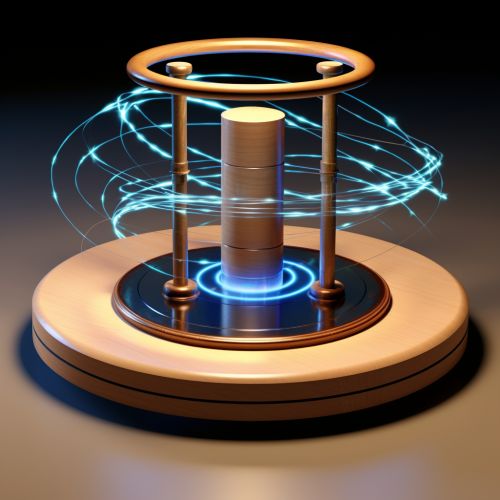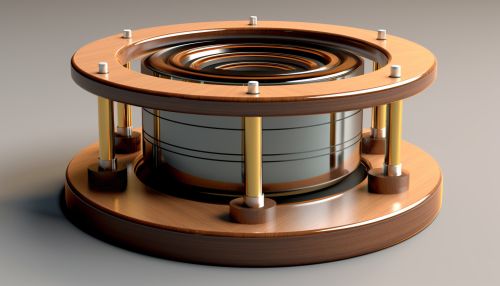Penning Trap
Introduction
A Penning trap is a device used to confine charged particles using a strong magnetic field and an electric field. Named after its inventor, Frans Michel Penning, it is widely employed in high-precision measurements of properties of ions and stable subatomic particles.
Principle of Operation
The Penning trap operates based on the principles of quantum mechanics and electromagnetism. It uses a combination of a homogeneous axial magnetic field and an inhomogeneous quadrupole electric field to trap charged particles.


The axial magnetic field forces the charged particles to move in a circular path, or cyclotron motion. This motion is characterized by a specific cyclotron frequency, which depends on the charge and mass of the particle and the strength of the magnetic field.
The quadrupole electric field, on the other hand, confines the particles in the axial direction. It creates a potential well along the trap axis, forcing the particles to oscillate back and forth along this axis. This oscillation is characterized by a specific axial frequency, which also depends on the charge and mass of the particle and the geometry of the trap.
Construction and Design
A typical Penning trap consists of three electrodes: two endcap electrodes and a ring electrode. These electrodes are arranged in a way that creates the desired electric field. The endcap electrodes are usually hyperboloidal in shape, while the ring electrode is cylindrical. The trap is placed inside a solenoid, which generates the required magnetic field.
The design of a Penning trap can vary depending on the specific application. For example, in ion trap mass spectrometry, the trap is often designed to allow for the selective ejection of ions based on their mass-to-charge ratio. In quantum computing, the trap may be designed to hold a single ion in place for extended periods, allowing for precise manipulation and measurement of the ion's quantum state.
Applications
Penning traps have a wide range of applications in both research and industry. They are used in high-precision measurements of fundamental constants, tests of fundamental symmetries, and studies of single ions and electrons. They are also used in mass spectrometry, quantum computing, and plasma physics.
In mass spectrometry, Penning traps allow for the precise measurement of the mass-to-charge ratio of ions. This can be used to identify and quantify the components of a sample, making Penning traps a valuable tool in fields such as chemistry, biology, and medicine.
In quantum computing, Penning traps can be used to hold and manipulate single ions, which can serve as qubits, the basic units of information in a quantum computer. This makes Penning traps a key component in the development of quantum computers.
In plasma physics, Penning traps can be used to confine and study plasmas, which are ionized gases. This can provide valuable insights into the behavior of plasmas, which are found in many natural and artificial environments, including stars, lightning, and fusion reactors.
